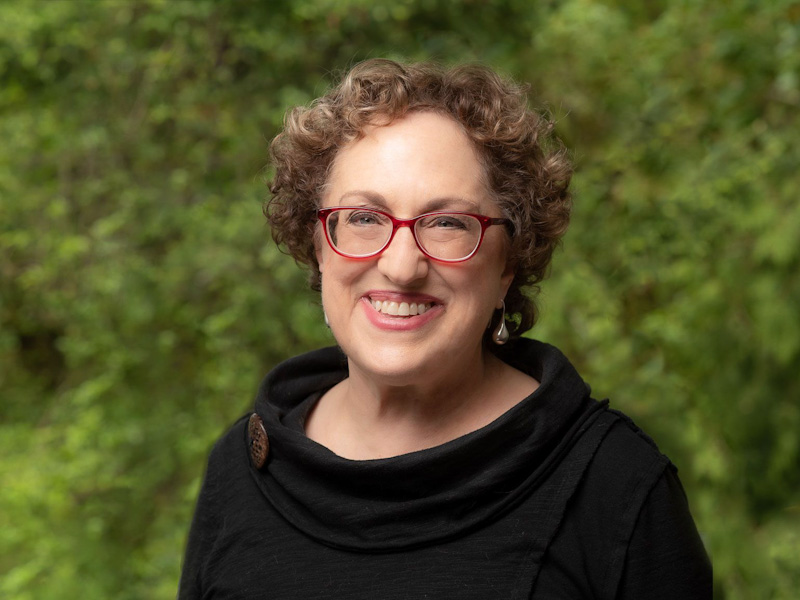Attorney at Law Magazine sat down with Joyce Tischler, a well-known animal rights attorney and one of the co-founders of the Animal Legal Defense Fund. Tischler is often referred to as the “Mother of Animal Law” for her significant contributions to the field. Her work has helped to establish legal precedents for animal protection and welfare, and has inspired countless individuals to become involved in animal advocacy.
AALM: What inspired you to pursue a career in law, and how did you get started in the field?
JT: In the summer of 1968, I volunteered to work for Senator Eugene McCarthy’s (unsuccessful) campaign to become the Democratic candidate for president. I was 15 years old, and for the first time in my life, I stood on street corners in NYC, debating with middle-aged men about the wisdom of the war in Vietnam. I loved it. It was also the first time I met lawyers who were passionate about changing society and I wanted to be like them. The “fit” between the law and nonhuman animals came 11 years later, when I was a practicing attorney and I met another attorney, Larry Kessenick, who was interested in animal rights. We formed a small discussion group of attorneys and law students who met once a month to discuss how the law applied to animals.
AALM: How did you first become interested in animal law and animal rights advocacy?
JT: From an early age, I’ve had strong emotional ties to nonhuman animals. Instinctively, I viewed them as more than “things.” This special interest followed me everywhere. In college, I helped run a cat shelter on campus and we spayed, neutered, got medical attention for, and placed about 100 cats per year.
I was in law school from 1974-77, and in 1975, the first edition of Animal Liberation by Australian philosopher, Peter Singer, was published. After reading that book, I began to think about whether animals could be accorded legal rights. Added to that, in my Constitutional Law class, we reviewed Sierra Club v. Morton, and I was inspired by Justice Douglas’ dissent; it was beautifully written and felt like legal poetry. Justice Douglas borrowed heavily from Professor Christopher’s Stone’s law review article, Should Trees Have Standing?, which I then read. The ideas that I was gathering from those three influences led me to draft a law review article titled, Rights for Nonhuman Animals: A Guardianship Model for Dogs and Cats, published at 14 San Diego L. Rev. 484 (1977). In that article, I argued that it was possible to conceive of legal rights being extended to other animals. And, because dogs and cats are the most familiar species to most Americans, I relied on those species as a focus for how rights could be applied.
AALM: What were some of the biggest challenges you faced in establishing the Animal Legal Defense Fund (ALDF)?
JT: There were no small challenges. I learned everything on the job: how to litigate animal law cases, how to work with board members, create and stick to a budget, handle media… But, the biggest challenge in the early years was money, because we had so little of it. I was living on credit cards, and often, our corporate account had only two months left of operating income. My co-founder, Larry Kessenick, said that if we didn’t figure out how to bring some money into this organization, we’d be nothing more than a debating society. So, I learned how to fundraise, which is not something they teach in law school. And, it took several years before we had a stable income and could hire more staff to bring more of the lawsuits that would protect animals.
AALM: Can you discuss a particularly memorable case or campaign that you worked on during your time at ALDF?
JT: North Carolina has an interesting and unusual law, N.C. General Laws, Sec.19A, which offers a way to sue civilly to enjoin cruelty. Starting in late 2004, we used this law to sue a couple who had kept 500 dogs in hellish conditions for years. We won a permanent injunction and, in a separate criminal prosecution the defendants were also convicted of cruelty to animals. The appellate process lasted for two more years and we were able to establish good precedent. In the meantime, the judge awarded all of the remaining (330+) dogs to ALDF, but no money to pay for their medical and other expenses.
Local N.C. citizens came out in force to help the dogs; a building owner donated the use of his empty building to house the dogs; veterinarians in the community donated hundreds of hours of time to bring the dogs back to health; Petsmart gave us kenneling and pallets of food, and people came daily to our makeshift shelter to feed, care for and socialize the dogs.
Over the course of a year, we were able to foster all of the dogs to private homes and after the final appeal, all the dogs were adopted. One of those dogs, an old Boston terrier I named Edgar, came home with me and was my canine soulmate. O Magazine carried a story about this case.
AALM: How do you stay motivated and inspired in the face of setbacks and challenges?
JT: To paraphrase a quote from an ancient Jewish religious leader, Rabbi Hillel: If I don’t speak up for the powerless, who will? And, if not now, when?
AALM: What lessons have you learned throughout your career that you think are valuable for others to know?
JT: Lesson #1: most of what I’ve accomplished got done because I didn’t stop to think that maybe I could fail. If I had known that building a nonprofit agency and a new field of the law would be this hard, I might not have tried.
Lesson #2: The luckiest person is the one who lives her authentic life – when the work you do is what you are truly passionate about. Respectfully ignore what your parents want you to do or be, listen to what that persistent inner voice tells you.
Lesson #3: If you build it, they will come. In the early days of developing animal law cases, I could not have foreseen that animal law would become the large movement that it is today; that it would be practiced in Europe, Chile, Brazil, Australia, New Zealand, Kenya, Zimbabwe, South Africa, Japan, China, Pakistan, India and so many other countries, that seasoned partners in large firms would enjoy handling animal law cases, and that the legal scholarship would be as robust as it now is. One person can start the ball rolling, but you have to be able to bring other people in and work with them to build a whole movement.
AALM: How did you transition from practicing law to teaching, and what motivated you to pursue this career path?
JT: I retired from ALDF in early 2019 and jumped at the chance to teach animal law full-time at the Center for Animal Law Studies at Lewis & Clark Law School (CALS). CALS is unique. We offer 25 separate animal law courses; in addition to our JD program, we’re building an in-person and online Animal Law LL.M. program, as well as an in-person and online Animal Law MSL program. There is also a student support group, a law journal, Animal Law Review, and an annual conference for attorneys and law students interested in animal law.
Students come to CALS/Lewis & Clark specifically to study animal law. They come from many parts of the U.S. and also hail from many other parts of the globe to study with us. I didn’t realize how much I would love teaching: working directly with students, helping them to grow in their knowledge and understanding of not only how the law works, but also, the specific problems faced by animals, the dearth of law to protect them and the creative practice of utilizing the law to offer greater protections. And, it makes me very happy to know that the students I’m teaching will graduate, become attorneys and do great things.
AALM: What is something your colleagues would be surprised to learn about you?
JT: For 25 years, I was a member of a small group of people who gathered together every Wednesday evening to read Shakespeare aloud. We shared a common love for the plays and the language. We would act out the parts, and occasionally, we would debate about who actually authored those plays. We became dear friends, celebrated births and watched each other’s children grow up; we mourned deaths and other losses. We read most of the plays (not all are worth reading) and some of them were read multiple times.
AALM: Looking back on your career so far, is there anything you’d change?
JT: Making mistakes is a given. That’s how we learn. Sometimes, I wish I had made fewer mistakes, but one doesn’t get to change that.
AALM: Anything else to add?
JT: If attorneys and law students are interested in getting involved in animal law or learning more about our work and programs at the Center for Animal Law Studies, you can reach me at [email protected]. And, you can help us grow our programs by donating to CALS.









Comments 1
Ms Tischler sounds like the attorney for me. My beloved Chihuahua has been taken by a shelter employee. I was staying with my sister while I underwent cancer surgery.
When I attempted to leave my sister’s house she had initiated legal proceedings and had had me deemed incompetent.
I am trapped and my dog gone. 3 years and I want my freedom.,